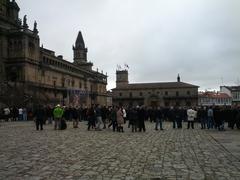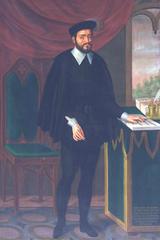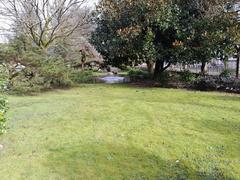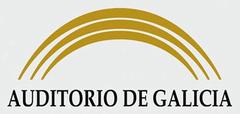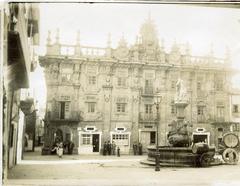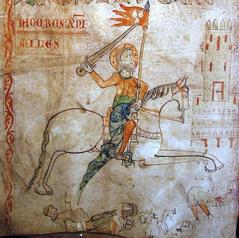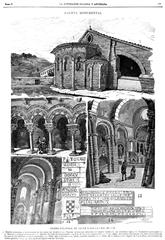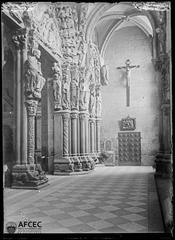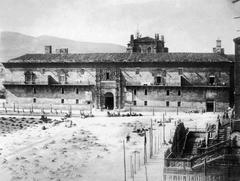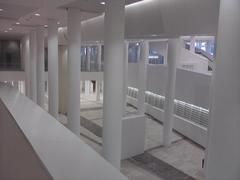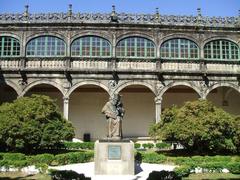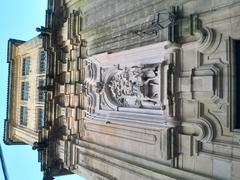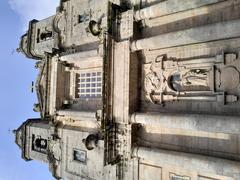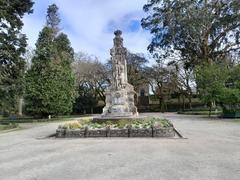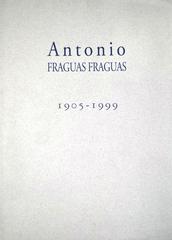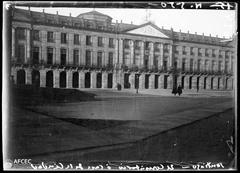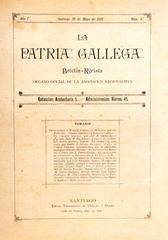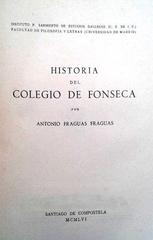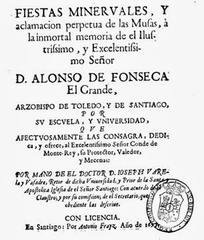
Colexio de San Xerome: Visiting Hours, Tickets, and Historical Sites Guide for Santiago de Compostela
Date: 15/06/2025
Introduction
Located at the heart of Santiago de Compostela, the Colexio de San Xerome (Colegio de San Jerónimo) stands as a remarkable testament to the city’s enduring academic, spiritual, and artistic legacy. Founded in the early 16th century under Archbishop Alonso III de Fonseca, the building was originally established as a preparatory college to support underprivileged students entering the University of Santiago de Compostela. Over the centuries, it has evolved architecturally and institutionally, blending Renaissance and late Gothic elements, and preserving a medieval portal that connects visitors to Galicia’s storied past. Today, the Colexio serves as the Rectorate of the University of Santiago de Compostela and remains an iconic feature of the Praza do Obradoiro, forming a unique urban ensemble alongside the Cathedral of Santiago, Hostal dos Reis Católicos, and Pazo de Raxoi.
This guide offers a comprehensive overview of the Colexio de San Xerome, including its historical background, architectural highlights, practical visiting information, and its significance within the cultural and urban landscape of Santiago de Compostela. Official sources such as the University of Santiago de Compostela website and the Santiago Tourism Board provide up-to-date details and further insights (Wikipedia; Lonely Planet).
Table of Contents
- Introduction
- Historical Overview
- Architectural and Artistic Highlights
- Location and Urban Context
- Practical Information for Visitors
- Frequently Asked Questions (FAQ)
- Conclusion
- References and Further Reading
Historical Overview
Foundation and Origins
The Colexio de San Xerome was founded between 1501 and 1521, under the patronage of Archbishop Alonso III de Fonseca. Established as a colexio menor, its primary mission was to provide housing and instruction for impoverished students pursuing higher education at the University of Santiago de Compostela. This reflected the humanist and charitable ideals of the Renaissance, as well as the city’s commitment to social mobility and academic excellence (Wikipedia; Fundación Jacobea).
Relocation and Evolution
In 1652, the original property was acquired by Benedictine monks, prompting the college’s relocation to its current position on the southern side of the Praza do Obradoiro. The new building incorporated the medieval Romanesque-Gothic portal from the original site, dating from circa 1490–1500. This portal, with its blend of Romanesque and Gothic elements and rich religious iconography, remains a defining feature (Guía Compostela).
Academic Role and Preservation
As a colexio menor, the institution played an essential role in Santiago’s academic landscape, offering instruction in grammar and liberal arts and supporting students of modest means. The Colexio operated until 1840, when educational reforms led to its closure. Subsequently, it served various educational functions, including housing the Escuela Normal de Magisterio during the 20th century. Since the 1980s, it has functioned as the Rectorate of the University of Santiago de Compostela (Lonely Planet; El Correo Gallego).
Architectural and Artistic Highlights
The Colexio de San Xerome is renowned for its Renaissance two-story façade, crowned by the Fonseca coat of arms. The main portal—transferred from the original college—features a distinctive Plateresque style, with elaborate stonework, sculpted saints, and iconography connected to healing and pilgrimage, such as Santa Lucía and María Magdalena. The tympanum displays the Immaculate Conception, flanked by other significant religious figures, illustrating the building’s dual role as a place of both learning and spiritual refuge (Guía Compostela; El Correo Gallego).
Inside, the building is organized around a central cloister, with arcaded galleries, vaulted ceilings, and finely carved capitals, though public access is limited. These elements exemplify the blend of local Galician craftsmanship and Renaissance artistry.
Location and Urban Context
Situated on the southern side of the Praza do Obradoiro, the Colexio de San Xerome stands alongside the Cathedral, Hostal dos Reis Católicos, and Pazo de Raxoi, forming one of Spain’s most celebrated architectural ensembles. Its central location marks the intersection of Santiago’s religious, civic, and academic life, making it a pivotal site for both locals and visitors (Lonely Planet; A Ticket to Take Off).
Practical Information for Visitors
Visiting Hours
- Exterior Viewing: Available any time; the façade can be freely admired from the Praza do Obradoiro.
- Interior Access: Generally restricted due to university administration functions. Occasional access is granted during special events or university ceremonies. Always check the University of Santiago de Compostela website for updates.
Tickets and Admission
- Exterior Viewing: Free of charge, no tickets required.
- Guided Tours: Some walking tours include the Colexio’s exterior; interior access may be available during special events. Booking is typically required for guided experiences. Check with the Santiago Tourism Board or official university channels for availability.
Accessibility
- The Praza do Obradoiro and surrounding pedestrian areas are wheelchair friendly, though the cobblestone paving may pose mild challenges. Benches and accessible routes are available.
Guided Tours and Visitor Tips
- Tours: Many guided walking tours of Santiago’s historic center include the Colexio de San Xerome, offering detailed historical and architectural commentary.
- Photography: Optimal lighting for façade photography is in the early morning or late afternoon.
- Conduct: As an active academic building, visitors should respect university operations and maintain a quiet demeanor.
Directions
- Location: Praza do Obradoiro, Santiago de Compostela, Spain.
- Getting There: The Colexio is easily accessible on foot from the city center, and a short walk from the main bus and train stations. The area is well-served by public transport and taxi stands.
Frequently Asked Questions (FAQ)
Q: Can I visit the interior of the Colexio de San Xerome?
A: Interior access is generally restricted. Limited access may be available during special events or university ceremonies; check official sources.
Q: What are the visiting hours?
A: The façade is viewable at any time. Interior visiting hours are not available to the general public.
Q: Are guided tours available?
A: Yes, many city tours include the Colexio’s exterior. Some may offer interior visits during special events.
Q: Is the site accessible for people with disabilities?
A: The Praza do Obradoiro is largely accessible, though cobblestones may present minor challenges.
Q: Is there an entry fee?
A: No, viewing the exterior is free. Guided tours may have a fee.
Conclusion
The Colexio de San Xerome encapsulates Santiago de Compostela’s rich educational and cultural heritage. Its origins as a Renaissance-era college supporting students of limited means, its elegant Plateresque façade, and its enduring role as the University’s Rectorate make it a symbol of the city’s intellectual and social spirit. While interior access is limited, the building’s exterior and prime location on the Praza do Obradoiro ensure it remains a must-see for visitors. Enhance your experience by joining a guided tour, exploring neighboring landmarks, and using digital resources like the Audiala app for audio tours and up-to-date visitor information.
Plan your visit today and discover the living heritage of Santiago de Compostela.
References and Further Reading
- Colexio de San Xerome, Wikipedia
- Santiago de Compostela Tourism Board
- University of Santiago de Compostela
- Lonely Planet Travel Guide
- Guía Compostela Cultural Guide
- El Correo Gallego Local Newspaper
- Opreismetco.nl Travel Article
- GoAskALocal Travel Guide

